Vertical farming involves increasing production using vertical-lying structures and surfaces to maximize crop production in limited space. Vertical farming is usually done without soil use. Instead, Hydroponics, Aeroponics, or Aquaponics are used. It allows year-round development at any location.
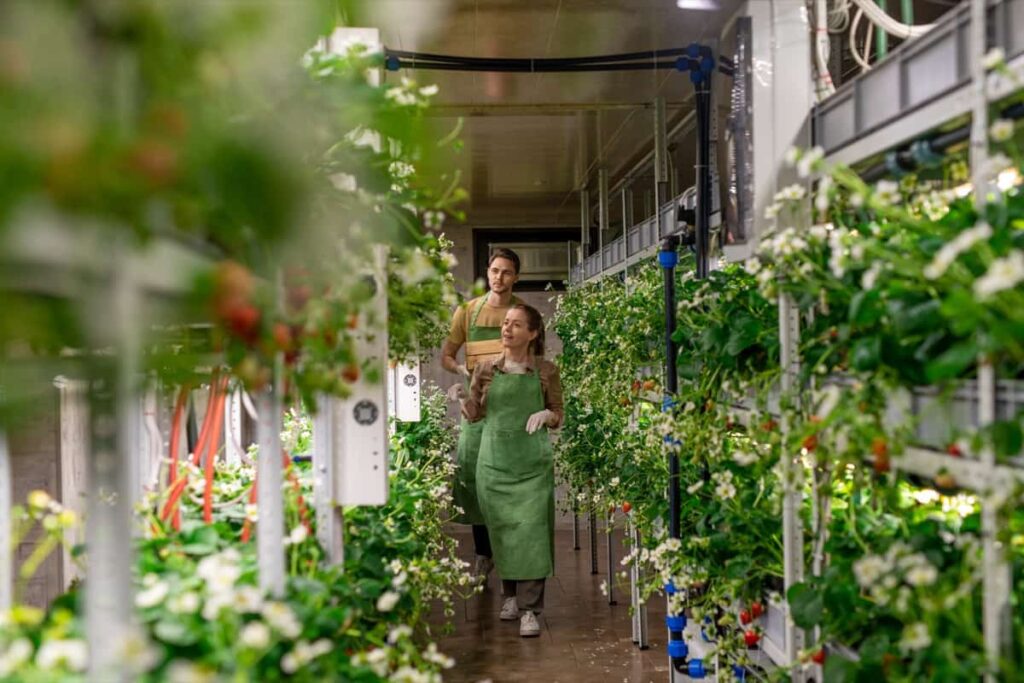
This often involves controlled environmental agriculture to improve plant growth and soilless farming techniques such as Hydroponics, Aquaponics, and Aeroponics. Artificial control over temperature, light, moisture, and gases enables the indoor production of foods and medicines. In many ways, vertical farming is similar to greenhouses, where metal reflectors and artificial light enhance natural sunlight.
Many industrialists in India and other parts of the world show interest in vertical farming. It is a money-making business that encourages sustainable development, a benefit for all. Let’s check out how to earn excellent income returns with commercial vertical farming.
How to Earn Excellent Income Returns with Commercial Vertical Farming
Benefits of Vertical Farming
Vertical farming has several benefits which make it promising for the future of agriculture. The need for land is quite low, water consumption is 80% less, water is recycled and saved, pesticide-free, and there is no real dependence on weather in high-tech farms. The main benefit of using vertical farming technologies is increased crop production which comes with a small area of land requirement.
Increasing the ability to cultivate various crops simultaneously because crops do not participate in the same plot of land growing is another post-demand benefit. Moreover, crops resist weather barriers due to indoor space, meaning extreme or unexpected weather events lead to less crop loss. Finally, due to the limited use of land, vertical farming is less disruptive to local plants and animals, thereby further protecting local flora and fauna.
In case you missed it: How to Start Aeroponic Vertical Farming: A Step-by-Step Guide for Beginners
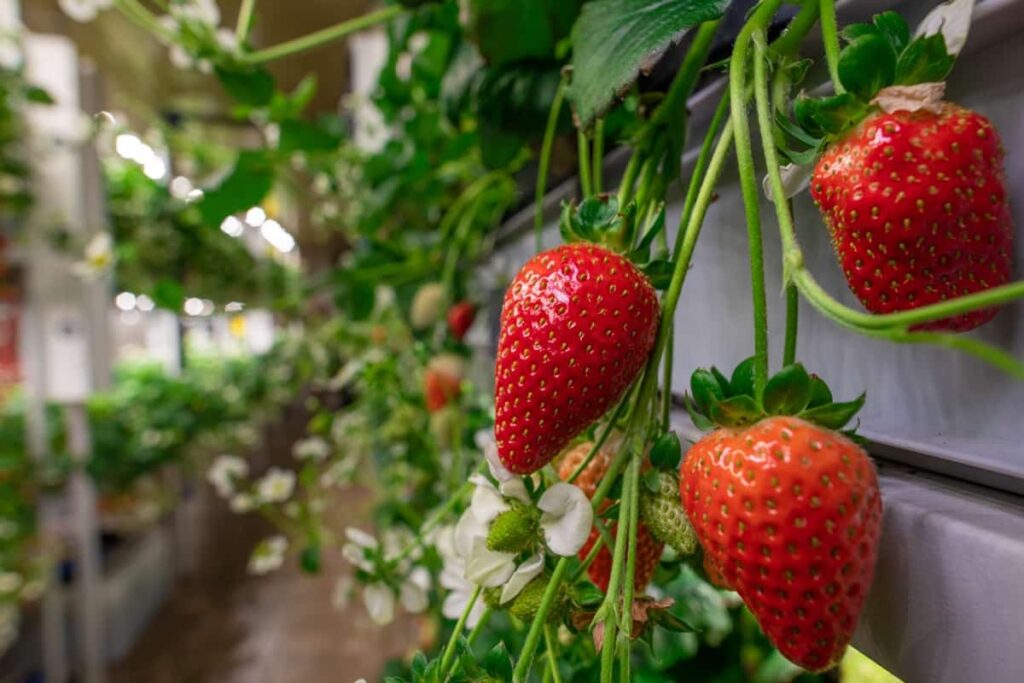
Techniques Used to Earn Crores through Vertical Farming
Hydroponics
The basic growing system used in vertical farms, Hydroponics, involves growing plants in soil-free nutrient solutions. Plant roots are immersed in nutrient solutions, which are often monitored and circulated to maintain the right chemical composition.
Aeroponics
An aeroponics system is the most effective plant-growing system for vertical farms, which uses up to 90% less water than even the most efficient hydroponics system. Plants grown in these Aeroponic systems also show higher amounts of minerals and vitamins, making plants healthier and possibly more nutritious.
Shipping Container Vertical Farming
Shipping container vertical forms are an increasingly popular option. Shipping container vertical farms use 40-foot shipping containers, which are regularly in the service of carrying goods around the world. Shipping containers are being renewed into self-made vertical farms with LED lights, drip irrigation systems, and vertically stacked shelves to start and grow various plants. These self-contained units have computer-controlled growth management systems that allow users to monitor all systems from smartphones or computers remotely.
Aquaponics
Aquaponics takes Hydroponics a step further by integrating land plant production with aquatic organisms in a closed-loop system that mimics nature itself. Nutritious wastewater from fish tanks is filtered through a solid removal unit, leading to a bio-filter, where toxic ammonia turns into a nutrient-rich nitrate.
Plants use fish-produced carbon dioxide, and the water in fish tanks obtains heat and helps the greenhouse maintain the temperature at night to save energy. However, since most commercial vertical farming systems focus on producing a few fast-growing vegetable crops, Aquaponics, including the aquacultural component, is less widely used than traditional Hydroponics.
In case you missed it: How to Start Microgreens Vertical Farming: For Indoors, Greenhouse, Growing Tips, Cost, and Benefits
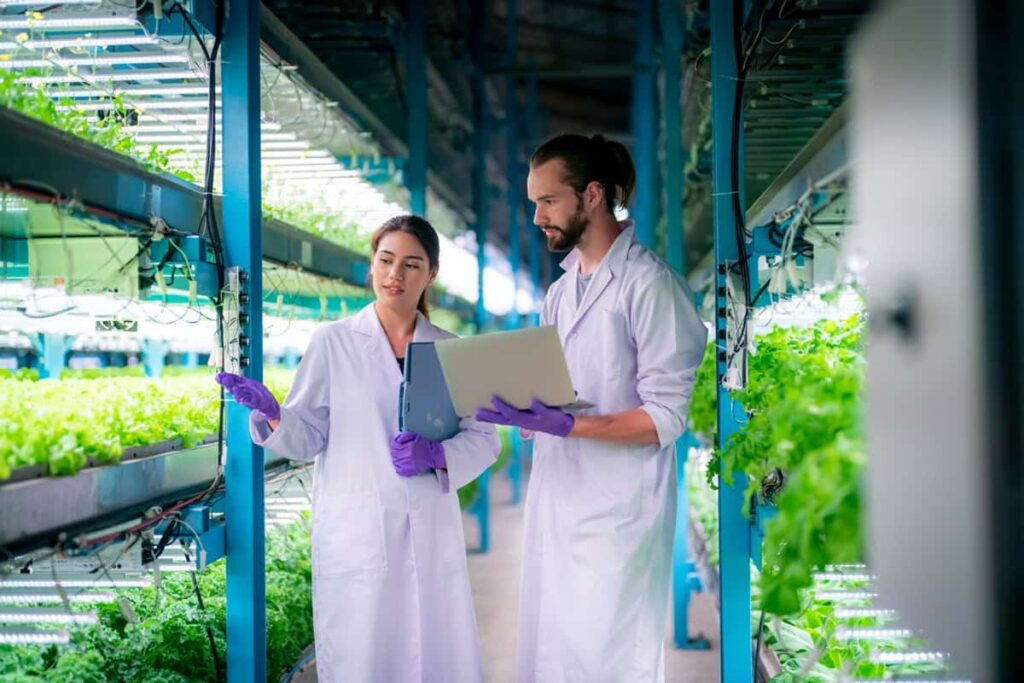
Earn Rs 3 to 3.5 Crores per Acre
Chandrakant Patel, a farmer from Rupal Kampa village, has set up vertical greenhouse farming on a four-acre farm at about Rs 10 crore and started cultivating turmeric. They have put turmeric into a galvanized tray system by constructing a sculpture on the ground in the greenhouse for contract farming under high-tech vertical farming. Using this method will produce 500 to 800 tonnes per Acre. They will earn around Rs 3 crore to Rs 3.5 crore per Acre. People from the surrounding areas have also been affected by the cultivation.
According to the farmer, if this type of cultivation is done, there is no need to spend much on labor, fertilizers, and water. In addition, this technique greatly increases production from farming. But this method of farming is expensive. Therefore, farmers are demanding that if the government provides aid or subsidy, they can get benefits. More and more farmers may be attracted to such modern farming if this can be done.
Crops Suitable for Vertical Farming
- Melons and Winter Squash varieties that produce 3 pounds of fruits in vertical gardens. They will need a strong trellis; planting along the Chain Link fence is ideal.
- Maize, Okra, Brussels sprouts, and sunflower are the perfect crops for vertical farming. They grow vertically naturally and need no help. These tall plants themselves can act as a support system for light vines.
- Peas, both garden varieties and snow peas, enjoy cooler temperatures. They don’t need a lot of water or fertilizer but should provide a trail or poles to climb.
- Tomatoes are favorite in almost every strip gardener. They are easy to cultivate and perform well in a wide range of plant-hardening areas.
- Vegetables like Cucumbers, Zucchini, and Summer Squash are ideal for vertical gardening as these three members of the cucurbit family are relatively light and can be done with the help of a trellis one. An interesting fringe advantage is that this type of crop cultivation vertically results in straight vegetables.
In case you missed it: Vertical Farming Business Plan in India: Crops, Subsidies, Companies, Cost, and Profits
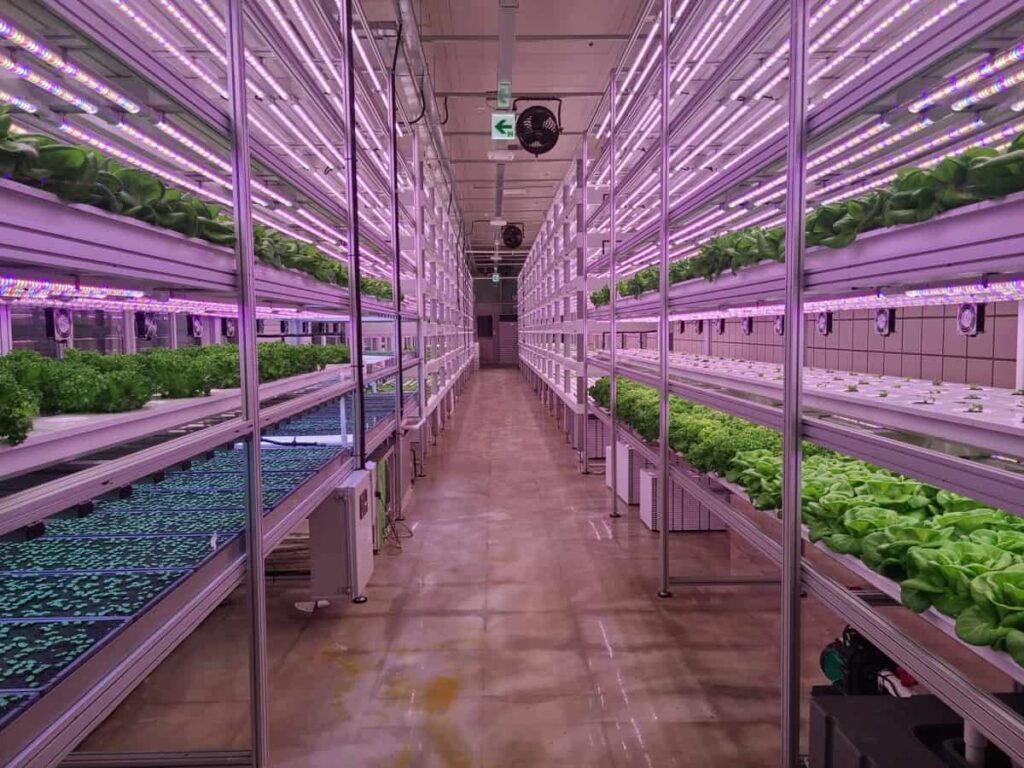
- Hops are a type of vine often used as a decorative plant, and fast-growing hops can reach an impressive 25 feet in height and require strong support systems such as wooden poles.
- Green Beans, in the form of Pole Beans, are easy to grow vertically in a small space and have crop season more than the bush type, offering you a steady supply of beans for several months. Tie with hemp twine, which can be composted with your bean vines at the end of the growing season.
- Greens like lettuce, Kale, and Basil are also best for your vertical farming. Leafy herbs and salad greens prefer at least partial shade, so you can tick them under large sun-loving plants. Or grow them in a shady corner using vertical planters made from pallets, stacks, hanging pots, shelves, or garden pockets.
Tips and Ideas to Earn Crores with Commercial Vertical Farming
Planning to Choose the Correct Crop
Planning is necessary while doing vertical farming. You need to make sure your production cost is low. So, the first step to ensure this is to pick the right crops. The aspiring vertical farmer needs to do a feasibility study and develop a profitable and sustainable plan. Determining the daily nutrients and lighting use required by each crop is very important.
Artificial Light
Light is the most important aspect of creating a perfect indoor farming environment. Growing light is an artificial source of light, usually, an electric light, designed to stimulate plant growth by emitting the best electromagnetic spectrum for photosynthesis. It helps in growing vegetables and fruits indoors throughout the year.
Temperature and Humidity Control
The important thing in vertical farming is to find out how cool, de-humidification, and heating are needed to manage the temperature and humidity of the growing space. De-humidification is also required to remove moisture contained in the air through evapotranspiration from plants and irrigation systems.
In case you missed it: Vertical Hydroponic Farming: A Growing Trend In Urban Agriculture
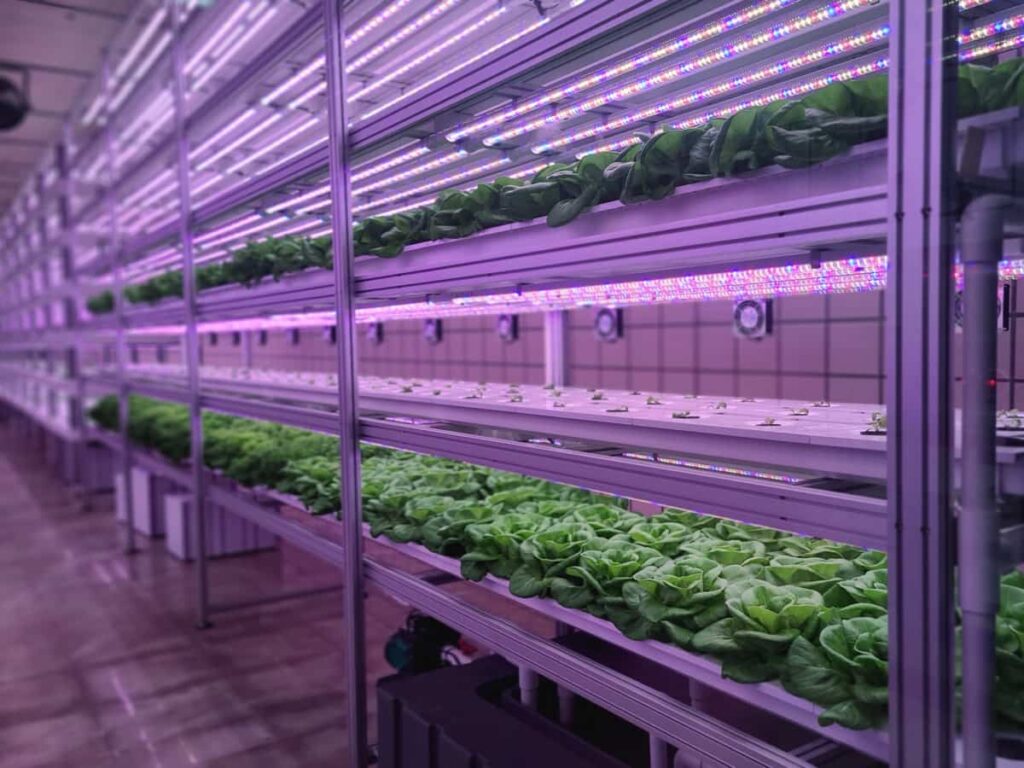
Controlling and Monitoring of Nutrients and Fertilizers
The liquid nutrient solution is the only source of food for the plant. Therefore, applying a balanced solution, which includes all plant nutrients, to the right balance is important. Nutrient-rich water should be closely monitored to ensure that nutritional levels are not too low or too high.
Time and Responsibility
All good things take time – patience is essential to indoor agriculture. A twist is the total amount of time it takes to harvest seed or seed as a mature plant to introduce seed or seedlings in the field system, grow it and serve it on your plate. You can choose to grow two types of crops: fast-turn crops and slow-turn crops. You can choose either one or both for your vertical form.
Fast Turn Crops
These include Lettuce, Cabbage, Chard, Collared Green, Mustard Greens, Parsley, Cilantro, Mint, Chives, Basil, and various microgreens. It usually takes up to six to seven weeks to produce them.
In case you missed it: Vertical Strawberry Farming: A New Way to Increase Your Income and Yield
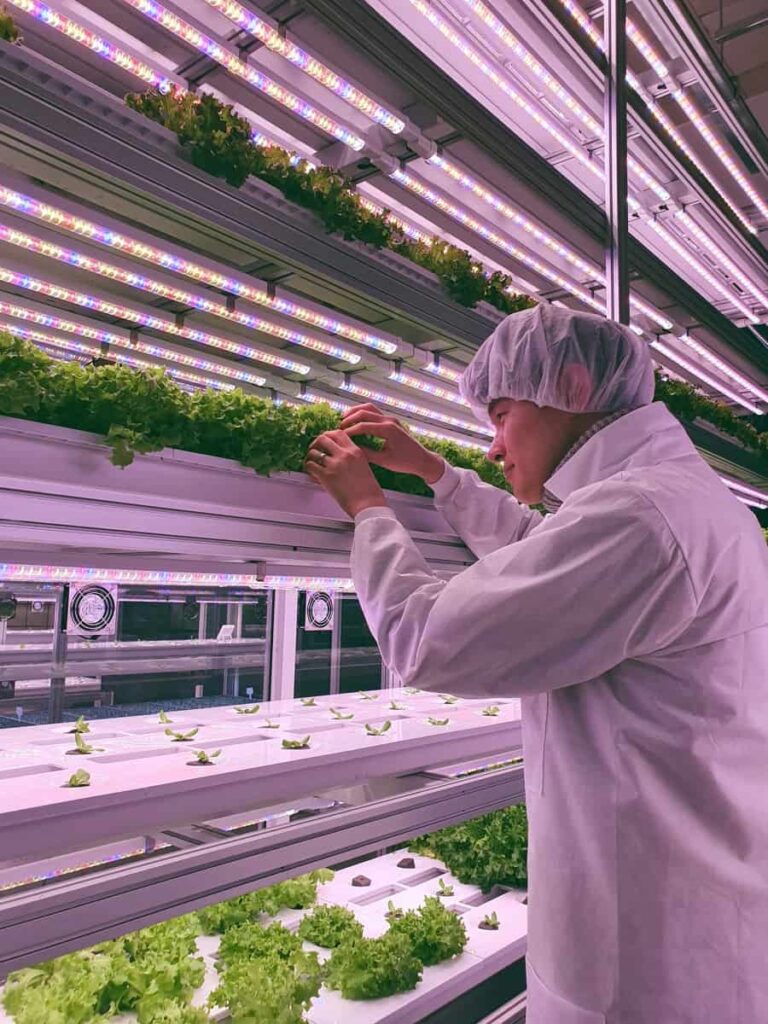
Slow Turn Crops
These are usually difficult to grow, but their income margin is higher than leafy greens. This includes woody herbs like Oregano and Rosemary and fruit crops like Strawberries and Tomatoes. So a good guide for an early farmer is to plant 80% green and 20% herbs.
Make More Profits
- Using Aeroponics for underuse of water.
- Control system for temperature regulating standard growth.
- Highly profitable layout without a square foot of waste.
- Proper care to avoid disruption of work due to repairs.
- Mixing Aeroponics and Hydroponics for higher productivity.
- Several units in the package reduce the packaging costs to some extent.
- To eliminate high-quality containers as these perishable goods can leave the containers used for a short time.
- The demand for the product market when fixing the price is a factor that should be considered. Low-demand products that are high will not pave the way for a profitable business.
- Higher profits can be made if products are rare for a particular area. For example, mint leaves are rare in the United States of America, Canada, and a few other countries. So, their increase can lead to higher prices as it is needed there.
In case you missed it: Top 29 Vertical Vegetable Garden Ideas for Beginners: Check How this Guide Helps Home Gardeners
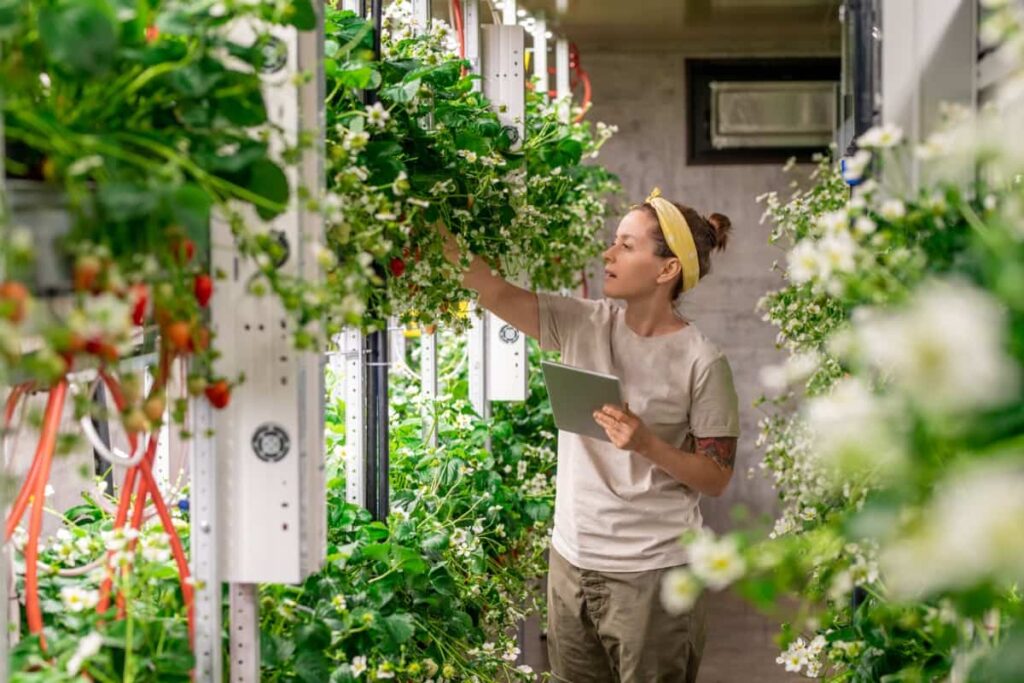
Conclusion
Vertical farming is gaining momentum worldwide as it requires less space and produces more yields. You can start Indoor vertical farming or Hydroponics in a Greenhouse. If you have a perfect vertical farming business plan, and with little care and marketing, you will earn great profits in the vertical cultivation business.
- Effective Fish Pond Construction Techniques for Beginners
- Irrigation and Water Management in Pineapple Farming
- Blossom to Harvest: Mastering Flowering and Pollination in Papaya Farming
- Pig Fattening Essentials: From Selection to Sale for Beginners
- Raising Wagyu Cattle: A Complete Guide for Premium Beef Production
- Soil Types and Their Water Holding Capacity
- Optimizing Irrigation Schedules for Coconut Groves for Enhanced Yield
- Espresso Your Garden: Coffee Grounds for Healthier Acid-Loving Plants
- The Best Soil Mix for Snake Plants: How to Mix Your Own Snake Plant Soil
